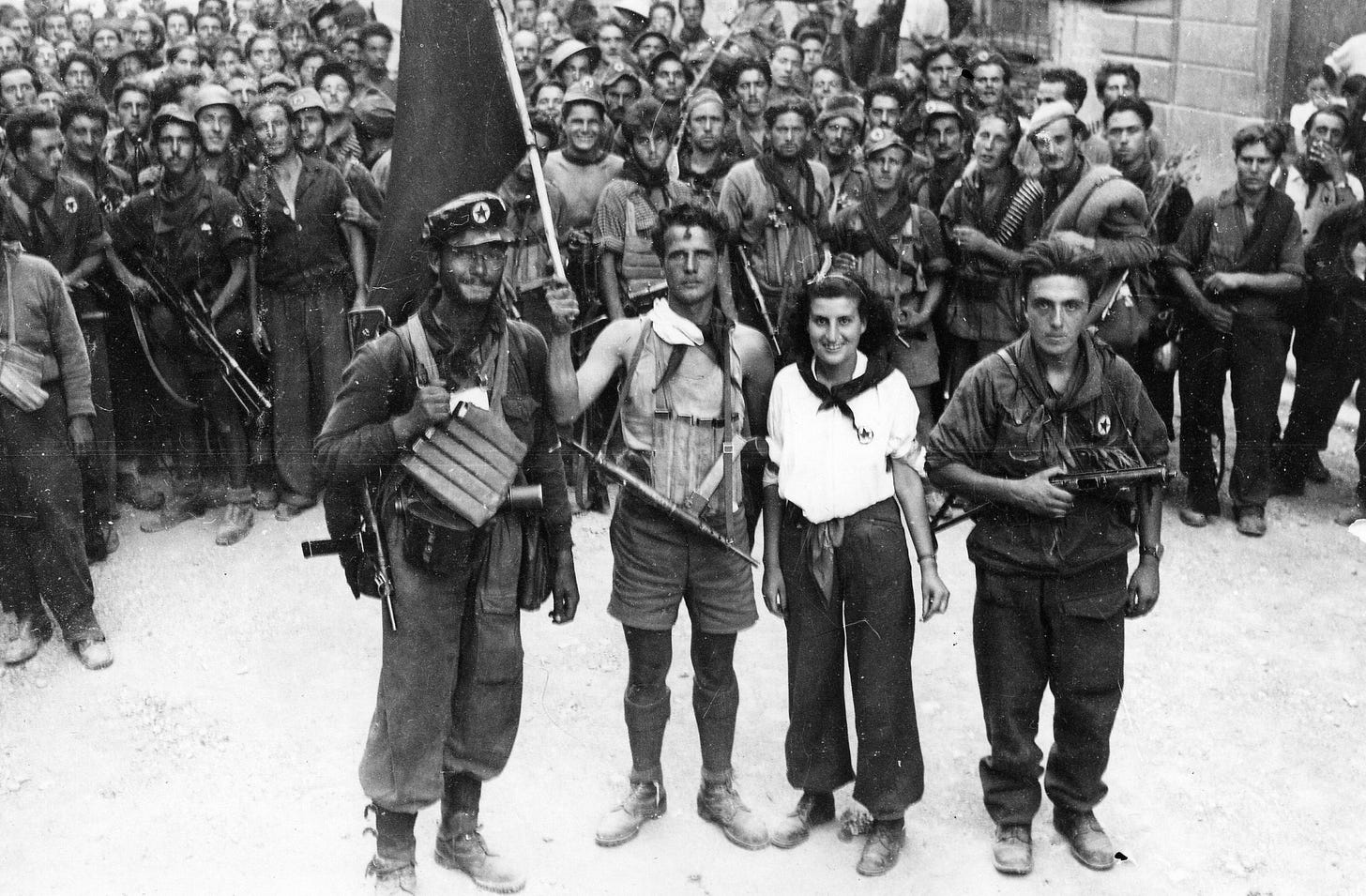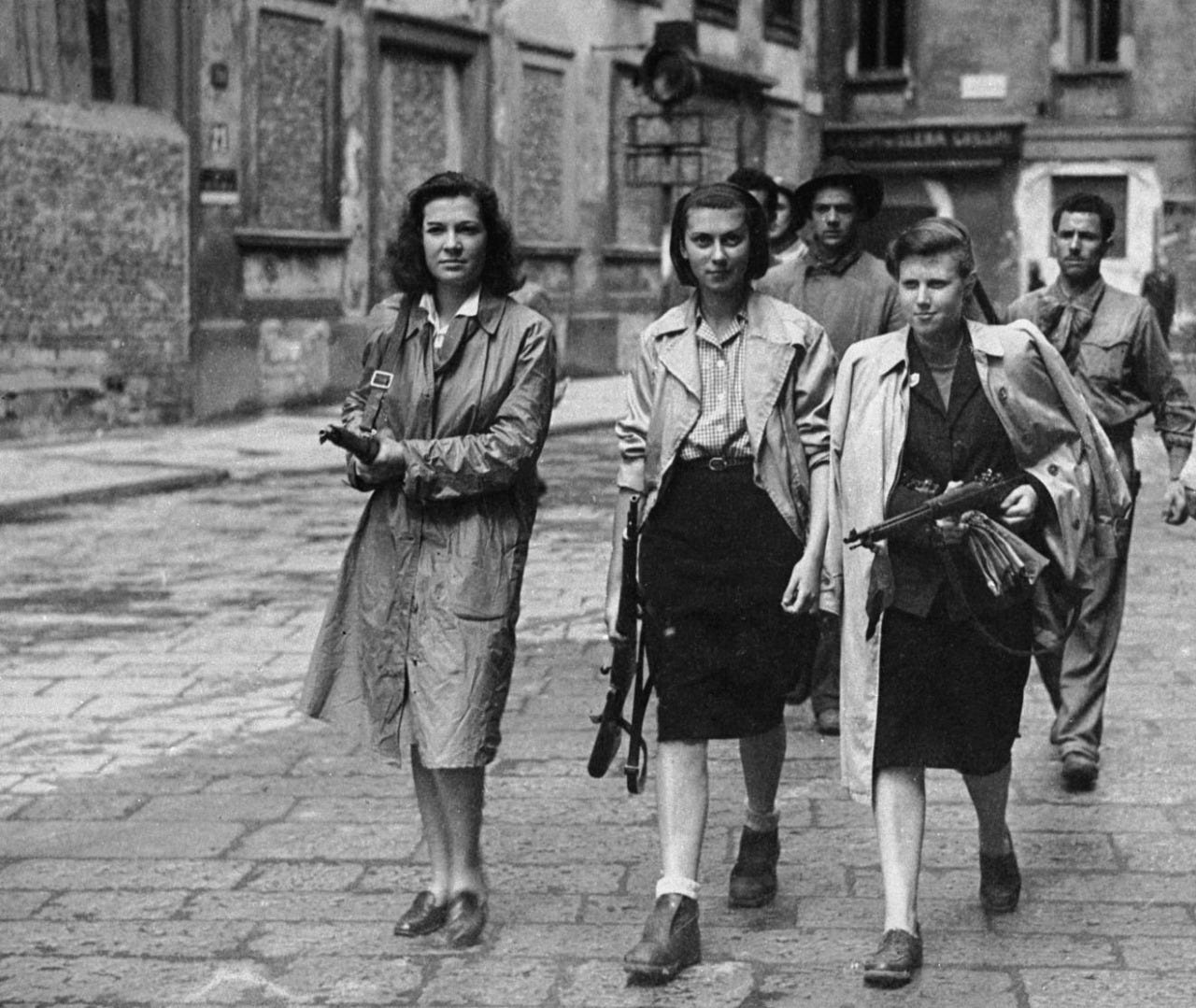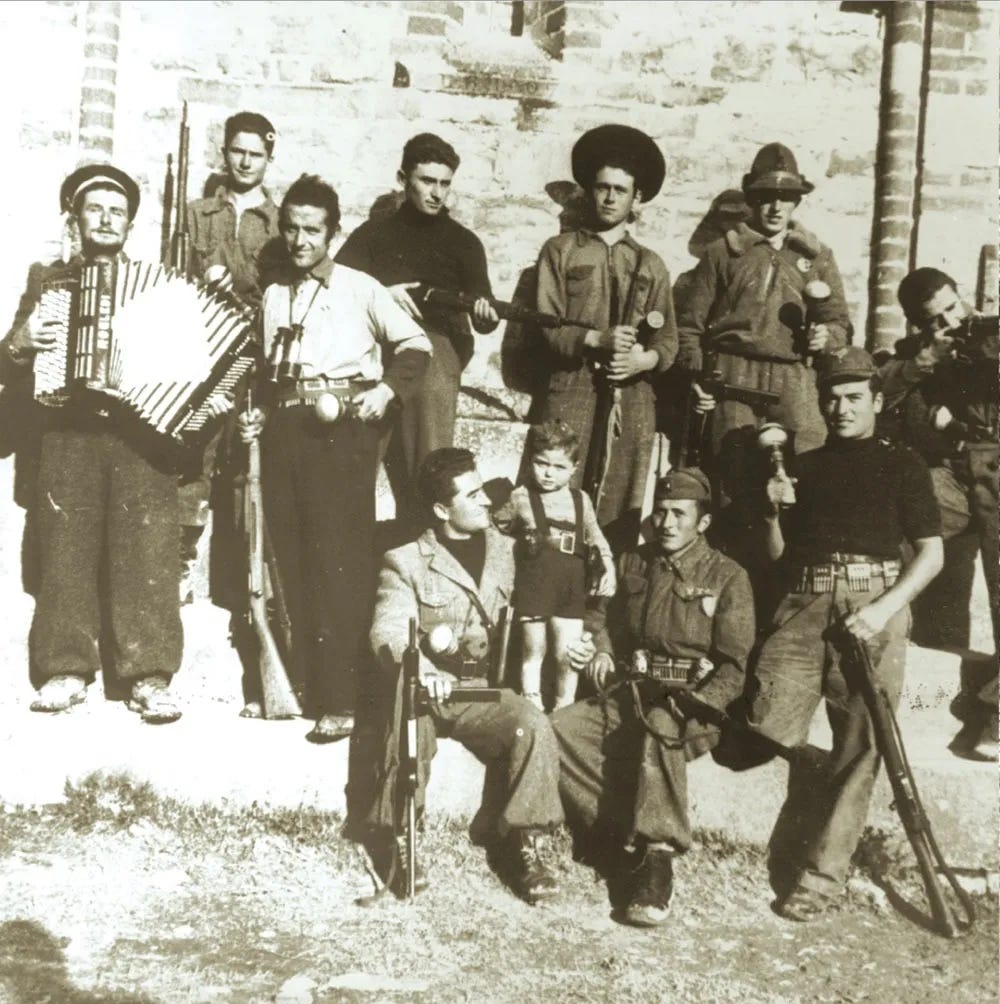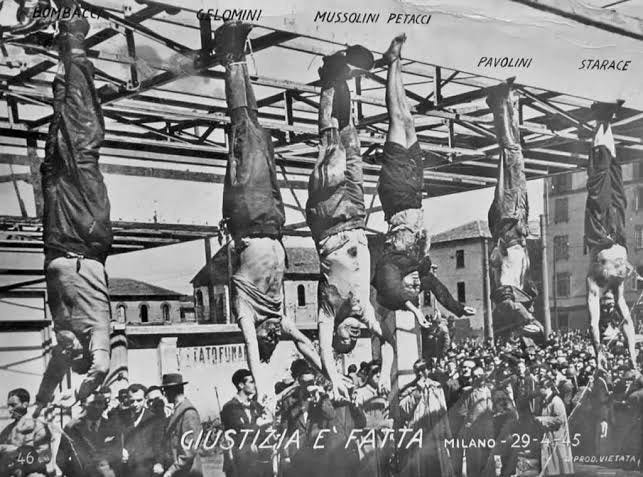With all the current conversations about fascism, I wanted to share some of the key tactics the Italian Resistance used to liberate themselves from fascist rule in Italy.
Throughout history, ordinary people have risen to extraordinary challenges, finding ways to resist oppressive regimes. The Italian Resistance against Mussolini’s fascist regime offers powerful lessons in courage, strategy, and solidarity.
Firstly, who were the Italian Resistance?
The Italian resistance, also known as the Resistenza, was a diverse coalition of anti-fascist fighters, political activists, and ordinary citizens who opposed Mussolini’s fascist regime and the Nazi occupation of Italy during World War II. Comprised of communists, socialists, anarchists, liberals, and Catholics, the resistance united people from all walks of life under a common goal: to liberate Italy from tyranny. Many operated as partisans, or partigiani in Italian, engaging in guerrilla warfare and sabotage, while others supported the movement through clandestine activities like spreading propaganda, smuggling supplies, and protecting those targeted by the regime. Their collective efforts ultimately played a crucial role in weakening fascist control and restoring democracy to Italy.
Here are ten bold tactics used by the Italian Resistance - part of the roadmap they followed to challenge fascist oppression and fight for justice.
1. Organised Covert Networks
To dismantle fascism, resistance begins in the shadows. The Italian partisans formed underground networks, building small, localised cells that operated beyond the regime’s reach. Partisan groups in Italy operated in rural areas and mountains, forming guerrilla cells that disrupted fascist control. These groups prioritised trust, encrypted communication, and secrecy. By maintaining strict compartmentalisation, they minimised the risk of exposure if any cell was discovered. To achieve this, they recruited trusted members, used clandestine communication, and connected like-minded individuals to lay the foundation for resistance.
2. Sabotaged State Infrastructure
Fascist regimes rely on infrastructure to maintain their power. The Italian resistance understood this and targeted critical systems: railways, factories, and communication lines. Italian partisans blew up rail lines used to transport Nazi and fascist troops, causing logistical chaos and severely weakening the regime’s operations. By destroying bridges and disrupting supply chains, they struck at the heart of Mussolini’s regime. To achieve this, they planned strategic sabotage operations, coordinated attacks on critical infrastructure, and worked collectively to ensure maximum disruption, serving as a reminder that physical systems were as vulnerable as the ideologies they upheld.
3. Spread Counter-Propaganda
Information is power. Italian anti-fascists used underground newspapers, leaflets, posters, and clandestine radio broadcasts to counteract state propaganda. By exposing the regime’s lies, uplifting truths about fascism’s oppression, and providing an alternative vision, they rallied support for their cause. Anti-fascist publications like L’Unità became lifelines of truth in an ocean of disinformation. To achieve this, they created anonymous networks for distributing materials and co-opted new media technologies to spread the message. These efforts provided a narrative that inspired and sustained the resistance, ensuring the message of freedom reached even the most isolated communities.
4. Conducted Guerrilla Warfare
When faced with superior military forces, the Italian partisans turned to guerrilla tactics. They used hit-and-run attacks, ambushes, and sabotage to weaken the regime’s control. Guerrilla warfare is not about direct confrontation; it’s about disrupting and destabilising power in ways that are nimble, strategic, and unpredictable. They trained in small arms and explosives, exploited knowledge of local terrain, and avoided direct confrontation with superior forces, making it impossible for occupying forces to maintain secure control of the region. Italian partisans also assassinated fascist officials and disrupted their command structure, striking fear into the regime.
5. Fostered International Solidarity
Resistance does not thrive in isolation. Italian partisans built alliances with sympathetic international forces, such as the Allies, who provided weapons, supplies, and moral support. Once again, they used clandestine communication to reach external allies and appeal to international movements against fascism. This global solidarity amplified local resistance, showing the importance of reaching out across borders to secure essential resources and support. By forging these alliances, they ensured their struggle had a far-reaching impact.
6. Organised Strikes and Boycotts
Economic resistance is a potent weapon. Workers in Italy’s factories organised strikes and slowdowns that disrupted Mussolini’s war economy, significantly hindering its operations. Boycotts targeted fascist-affiliated businesses, draining financial resources that supported the regime. To achieve this, they worked with unions, ensured widespread participation, and focused on critical industries to maximise impact. By hitting the regime where it hurt - its finances - the resistance weakened its grip. Strikes and boycotts unified workers in collective action, demonstrating the power of unified labour and how economic disruption could destabilise even the most entrenched systems of control.
7. Targeted Collaborators
The Italian resistance did not just fight the regime; they addressed those who enabled and enforced it. Collaborators - informants, military leaders, and officials - were identified and neutralised. Italian partisans assassinated fascist officials and disrupted their command structure. To achieve this, they conducted thorough reconnaissance, ensured precision in targeting, and prioritised high-impact individuals. By disrupting the regime’s support network, they struck at the mechanisms that upheld fascist control. Addressing complicity was crucial for dismantling the systems of oppression that enabled the regime’s survival.
8. Defended and Supported Vulnerable Communities
Fascism thrives on scapegoating and marginalisation. The Italian resistance protected marginalised groups targeted by the regime, such as Jews, ethnic minorities, and political dissidents. Resistance groups in Italy sheltered Jews and political refugees, smuggling them out of occupied areas to ensure their safety. They established escape routes, provided food and medical supplies, and counteracted regime terror campaigns. By offering safe havens and material support, the resistance not only saved lives but also strengthened the movement. Solidarity was not just a moral imperative; it was a strategic necessity. These efforts fostered trust and shared purpose among those resisting oppression, ensuring the survival of vulnerable communities.
9. Undermined Morale of Regime Forces
The partisans understood that breaking the enemy’s morale and cohesion was just as critical as defeating them in battle. They spread dissent among soldiers and police by exposing cracks within the regime’s ranks. They actively worked to demoralise occupying Nazi troops by cutting off supplies and spreading rumours that highlighted the regime’s failures. To further weaken enemy resolve, they forged relationships with conscripts, offering amnesty for defectors and providing pathways to abandon their posts. These actions systematically eroded the morale of occupying forces, making it increasingly difficult for the regime to maintain control and paving the way for greater resistance efforts.
10. Established Free Zones and Parallel Institutions
In the face of oppression, the Italian resistance created liberated zones - areas where the regime’s authority was absent or weak, allowing them to govern themselves and create an alternative governance structure. Italian partisans established temporary liberated zones in the mountains, governing independently from Mussolini’s regime, demonstrating what freedom could look like. These free zones inspired movements by proving that liberation was not just a dream but a tangible reality. By providing essential services, organising local militias, and fostering self-reliance, these zones became blueprints for future governance and sustained the vision of freedom. Through these efforts, the resistance strengthened their movement and offered a powerful example of what a post-fascist future could achieve.
Partigiani (Italian Partisans) location and date unknown.
So, how did it all end?
Well, here is a picture of Mussolini and some of his friends…
The Italian Resistance played a crucial role in the downfall of Mussolini’s regime and the liberation of Italy from fascist rule. By 1943, as Allied forces advanced into Italy, resistance efforts intensified, further destabilising Mussolini’s already weakening grip on power. In 1945, Italian partisans captured Mussolini as he tried to flee to Switzerland. Alongside several of his closest allies, he was executed on April 28, 1945. Their bodies were displayed in Milan’s Piazzale Loreto as a public symbol of fascism’s defeat. Shortly thereafter, Allied forces and the efforts of the Resistance successfully liberated Italy, marking the end of fascist rule and paving the way for the establishment of a democratic republic.
The Italian resistance reminds us that fighting fascism requires creativity, courage, and community. Each of these tactics demonstrates the power of collective action against even the most entrenched regimes. Today, as we face our own battles against oppression and injustice, these lessons remain as relevant as ever. The path to liberation is not easy, but history shows us that it is possible - when we organise, resist, and dream together.
”Siamo Tutti Antifascisti!” (We are all antifascists).








